If you’re looking for a spring for your garage door, you’ll need to get one that is right for your specific door. Garage door springs come in many different sizes, and their sizing varies based on the door’s specifications, including weight and other factors.
To determine your garage door spring’s size, you’ll need the following four parameters:
- Spring’s coil wire diameter.
- Spring’s coil inside diameter.
- Spring’s coil length.
- The direction of the spring wind.
Measuring the Spring Wire Diameter
The designated measuring tool used by garage door repair professionals is the most reliable and accurate way to measure your spring’s wire diameter. You can use the spring measuring tool to quickly and effectively determine your spring wire diameter.
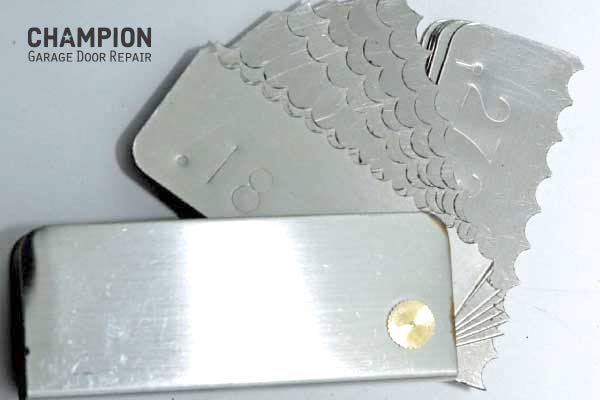
Choose a metal sheet that appears to match and place it on the spring coil. Repeat the process with different sheets until you achieve a perfect fit. Make sure to verify the measurement in several spots because springs can become deformed or accumulate rust over time, which might affect the wire thickness in some cases.
How to Measure Springs Without a Measuring Tool
IIf you don’t have a measuring tool or proper gauge caliper to measure garage door springs, you can determine your spring’s wire diameter by its color code. The color code is usually painted on the spring’s coil. Be careful not to confuse the color code of the spring with the color on the springs’ cones, which are typically red or black.
Most Common Spring Wire Sizes by Color Code
- Orange: 0.192” and 0.273”.
- Light blue: 0.200”.
- Yellow: 0.207”.
- White: 0.218”.
- Red: 0.225”.
- Brown: 0.234”.
- Green: 0.243”.
- Gold: 0.250”.
- Dark blue: 0.262”.
Note that not all spring manufacturers print a color code on their springs. Custom springs likely will not have a color code either. If your springs are not color-coded, you can measure the length of ten and twenty coils of your spring. Follow the steps below:
- Choose a spot on the spring coil to start measuring from and mark it. It doesn’t matter where you start.
- Mark the spot with a marker or a piece of paper and count 10 coils.
- Mark the 10th coil with a marker or a piece of paper and continue to count 10 more coils.
- Measure the distance between the 10th and 20th coils.
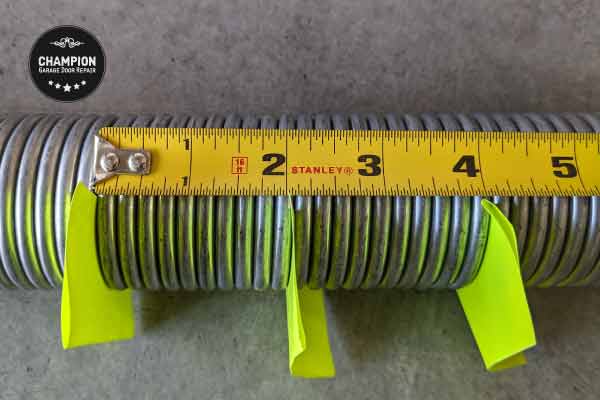
Once you have the measurements, compare them to the garage door spring chart provided below to determine your spring wire size.
Print and save it for future reference.
Measuring the Spring Inside Diameter
Most springs will have the coil’s inner diameter printed on the spring’s stationary cone.
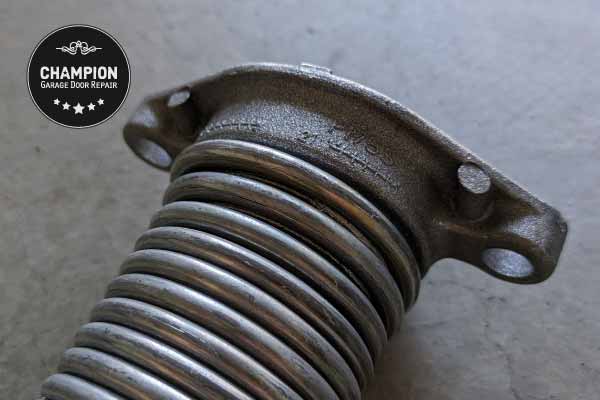
However, if it’s not printed on your spring, you can determine its inside diameter by measuring the inside radius of the coil. Do not measure the spring’s cone and do not include the spring’s wire in your measurements.
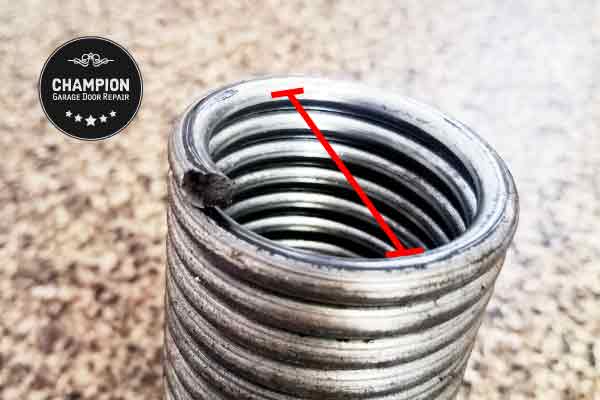
The most common inside diameter measurements for standard springs for standard residential garage doors are: 175 (1-3/4”), and 200 (2”). Custom and commercial grade springs will have an inner diameter of 2-1/4″, 2-5/8″, or greater.
Measuring the Spring Length
When you measure the spring length, be sure to measure the spring’s coil length only. Do not include the spring’s cons in your measurements.
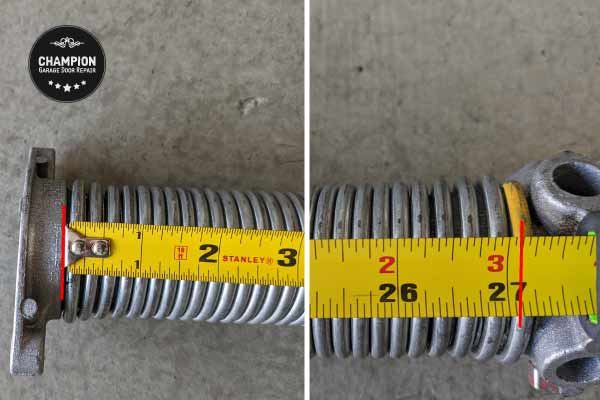
The Direction of the Spring Wind
Right wind springs will typically have their winding cones painted in red, while left wind springs have their winding cones painted in black.
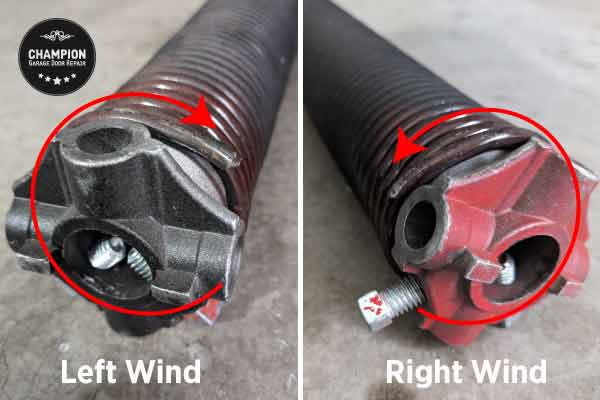
If your spring’s cone is not painted, check which direction the end of the spring’s wire points to and refer to the picture above to determine the winding direction of your spring. The right wind spring typically goes on the left side, and the left wind goes on the right.
The End Result
Before purchasing a replacement spring, ensure you have all the necessary information. It should follow this format: (wire diameter) x (inside diameter) x (wire length), RW (direction of the wind). For example: 207 x 1-3/4” x 27”, RW.
The Importance of Getting the Right Spring’s Size
Installing the correct spring on your garage door is crucial to keep the door running smoothly. In extreme cases, the wrong size spring could cause your garage door to crash down or pull up unexpectedly, potentially knocking you off the ladder and even causing the garage door to come off its tracks. In other cases, the door would not be balanced properly, which can cause the garage door components to wear out.
If you have difficulties getting the correct measurements, take your springs with you to a local spring supplier so they can measure them for you. Do not guess the spring size or direction of the wind.







